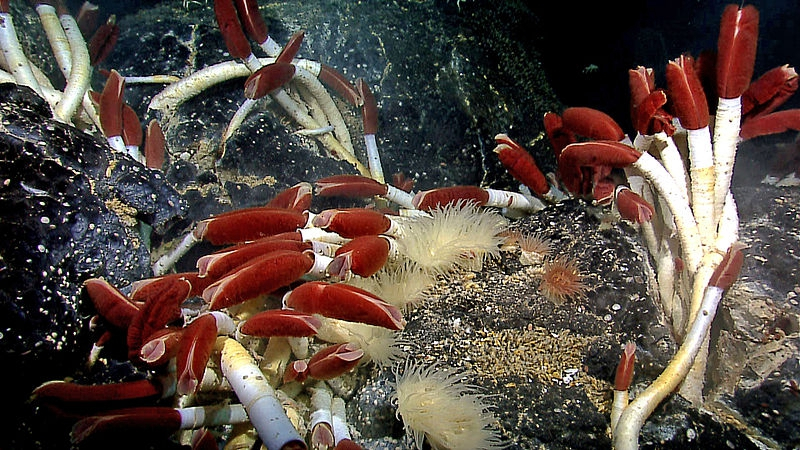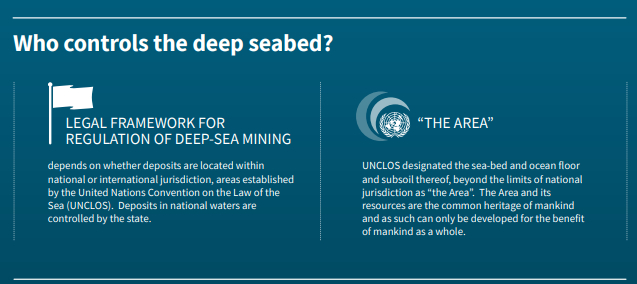
Tech & Sci
20:56, 16-Jul-2018
Pressure mounts for sustainable deep sea mining
Updated
20:12, 19-Jul-2018
Alok Gupta

Rules for managing deep-sea mining, under discussion at the International Seabed Authority (ISA), are insufficient to prevent irreversible damage to marine ecosystems, the International Union for Conservation of Nature (IUCN) says in a new report.
A mining code currently under development lacks sufficient knowledge of the deep sea, the IUCN says, and a complete assessment of how mining operations will harm the marine ecosystem is needed to help ensure adequate protection of deep-sea life.
The report, “Deep Seabed Mining: A Growing Environmental Challenge,” was released on Monday to coincide with the 24th session of ISA at its Jamaica headquarters. In it, experts explain the potential ecological impacts of deep-sea drilling on endangered species and marine ecosystems.
The ISA session is focusing on developing a “mining code” to regulate the exploitation of the deep seabed. “We are operating in the dark,” said Carl Gustaf Lundin, director of IUCN’s Global Marine and Polar Programme.
“Our current understanding of the deep sea does not allow us to effectively protect marine life from mining operations. And yet, exploration contracts are being granted even for those areas that host highly unique species.”
The deep sea, which remains “understudied and poorly understood,” needs a detailed scientific probe, the report states.
In recent years, commercial interest in deep-sea mineral deposits has witnessed an unprecedented surge. Large establishments are eyeing copper, aluminum, cobalt and other metal deposits to satiate rising global demand.
Electronic devices like smartphones, green technologies including solar power, and batteries for electric vehicles are significant consumers of these metals.
“Exploitation of minerals using current technologies could potentially destroy the rich deep-sea life forever, benefiting only a few, and disregarding future generations,” Lundin said.
Some experts feel that natural resources from the oceans that constitute 70 percent of the Earth’s area remain untapped. They favor deep-sea mining – a process of retrieving mineral deposits from the ocean below 200m.

International Seabed Authority is discussing regulations to control deep sea mining. /IUCN Graphics
International Seabed Authority is discussing regulations to control deep sea mining. /IUCN Graphics
Others believe that such activities would harm the oceans and marine life forever. “Physical damage to marine habitats due to the scraping of the ocean floor by machines – similar to clear-cutting a forest – and the stirring up of fine sediments on the seafloor that can smother animals and cloud the water,” the report warns.
“Additional impacts include toxic pollution due to leaks and spills, and noise, vibrations and light pollution from mining equipment and surface vessels.”
The ISA, an inter-governmental autonomous body, was set up to manage mining activities in the international seabed areas that are beyond the limits of national jurisdiction.
It has cleared around 29 contracts for commercial mining in international waters expected to begin by 2025. Exploratory drilling in the national waters of Japan started in 2017, and commercial mining is predicted to occur in Papua New Guinea by 2020.
“Stringent precautionary measures to protect the marine environment should be a core part of any mining regulations, yet these remain missing in action,” Kristina Gjerde, a senior advisor with IUCN, said.
“In addition to this, the ISA’s challenging and conflicting mandate will require improved oversight by the international community to ensure marine life is adequately protected.”
Apart from IUCN, last week, an international team of researchers prepared a comprehensive set of criteria to help the ISA protect local biodiversity from deep-sea mining activities.
“The ISA has set a precedent of conserving 30 percent to 50 percent of their total management area in each region,” said Daniel Dunn, lead author of the paper from Duke’s University’s Nicholas School of the Environment.
“Our framework helps pinpoint the specific characteristics – how close, how large, how long or wide – each area within a network needs to be to meet this objective.”
(Cover Image: Giant tube worms (Riftia pachyptila), found at hydrothermal vent sites along the East Pacific Rise. /NOAA Photo)

SITEMAP
Copyright © 2018 CGTN. Beijing ICP prepared NO.16065310-3
Copyright © 2018 CGTN. Beijing ICP prepared NO.16065310-3